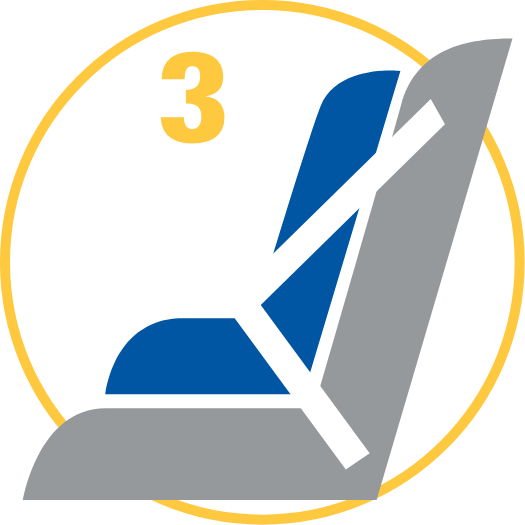Infants
(Birth to 12 months)Ride in the back seat in a rear-facing infant or convertible seat.
Learn how to protect them with the appropriate restraints, properly installed.

WE’LL CHECK YOUR CAR SEAT INSTALLATION FOR FREE. VIRTUALLY OR IN-PERSON.
The Delaware Office of Highway Safety provides fitting stations where certified car seat technicians will, at no cost, teach you to install and use your car seat properly. Call to schedule your appointment today.
Is your child’s car seat registered?
Make sure you receive prompt notice if your car seat is recalled.
Here’s how to register: Safe Kids Worldwide
CALL TO MAKE AN APPOINTMENT TODAY
OHS Fitting Station Locations
New Castle County
Wilmington DMV
Rt. 13 South in New Castle
Coordinator: Shawn Rohe
Office: (302) 434-3234
Mobile: (302) 256-1123
Email: Shawn.Rohe@delaware.gov
Kent County
Dover DMV
Rt. 113 South in Dover
Coordinator: Aubrey Klick
Office: (302) 744-2749
Mobile: (302) 387-2324
Email: Aubrey.Klick@delaware.gov
More Fitting Stations
New Castle County
Mill Creek Fire Company
Kirkwood Hwy. in Marshallton
(By appointment only, no charge for fittings)
Email carseatcheck@millcreekfire.org with your name, address, phone number and the best time to contact you.
Delaware’s restraint laws work to ensure the safety of child passengers.
Must be properly restrained in a federally approved child safety seat appropriate for the child’s age, weight and height.
Must wear seat belts.
Required to sit in the back seat if there are active airbags in the front passenger seating position.
$25 for each child not appropriately restrained.
Here are more things you can do to protect your young passengers.
The center of the back seat is the safest spot for your child.
Never place a rear-facing car seat in front of an airbag. Airbags can kill young children riding in the front seat.
Always wear your seat belt.
Don’t drive until the kids are buckled up – no matter how much they complain.
Use proper restraints every time, no matter how short the drive is.
The appropriate car seat changes as your child grows in age, height and weight. Here is a guide to the four stages of child passenger safety, and the progression of safety restraints you’ll eventually need.

Ride in the back seat in a rear-facing infant or convertible seat.

Ride in the back seat in a rear-facing car seat (or convertible seat) until reaching the height or weight limits for that seat, then move on to a forward-facing seat.

Ride in the back seat in a forward-facing car seat with a harness until reaching the height or weight limits for that seat, then move on to a booster seat.

Ride in the back seat, secured by both lap and shoulder belts when riding in a booster seat, or when they have progressed to using the seat belt alone.

For infants / toddlers

For toddlers/young kids

For young kids/older kids

For older kids
Vehicles and heatstroke: Do you know the facts?
Since 1998, more than 900 children have died in hot vehicles in the U.S. – often, tragically, because the driver simply forgot they were there, or left them alone in the vehicle “for just a moment.”